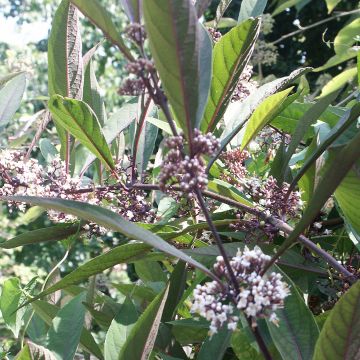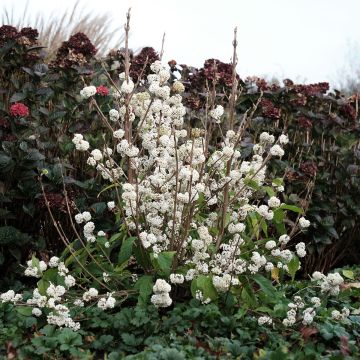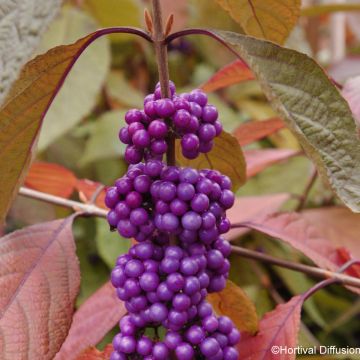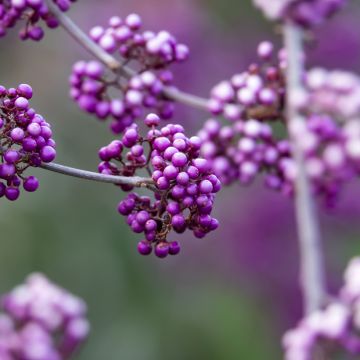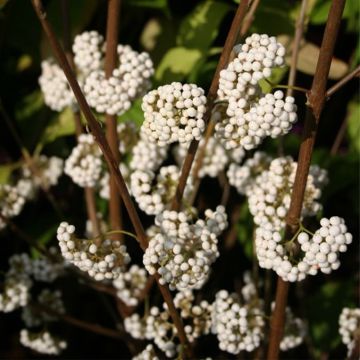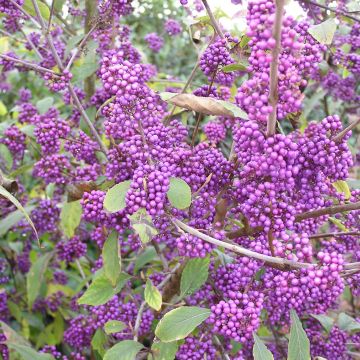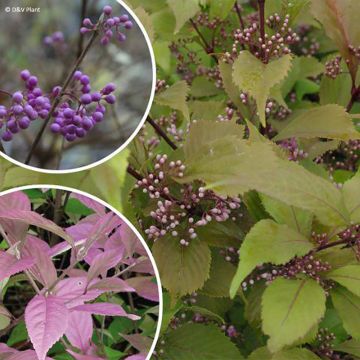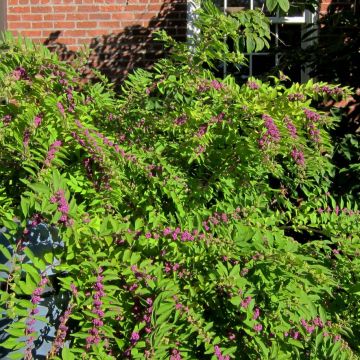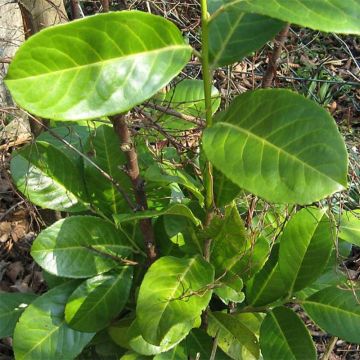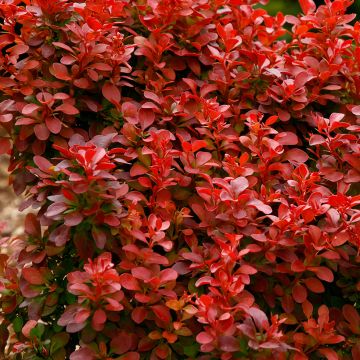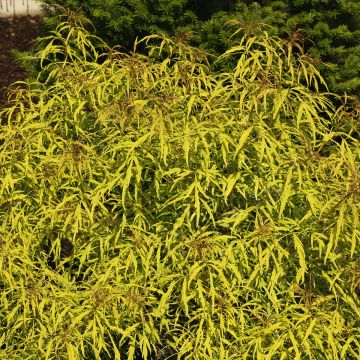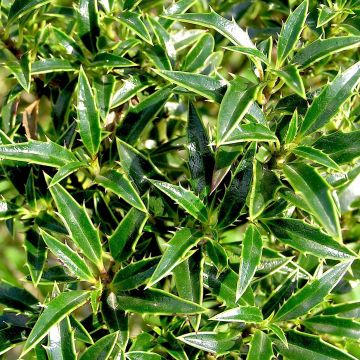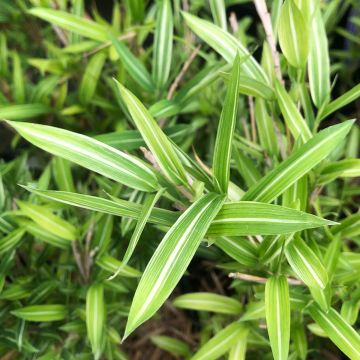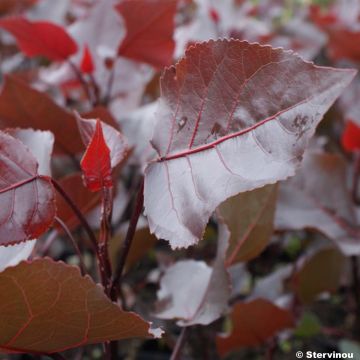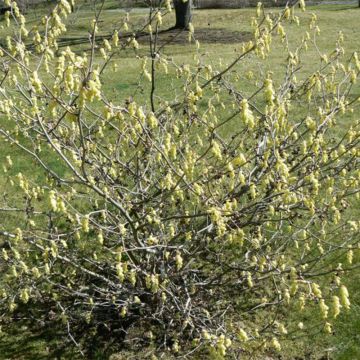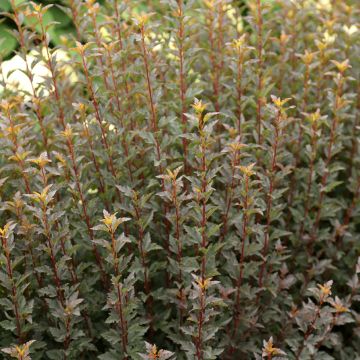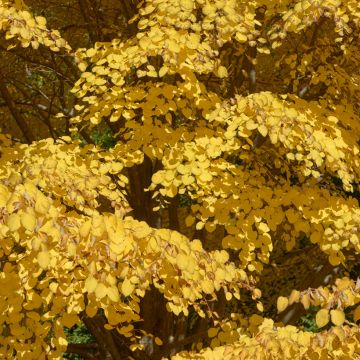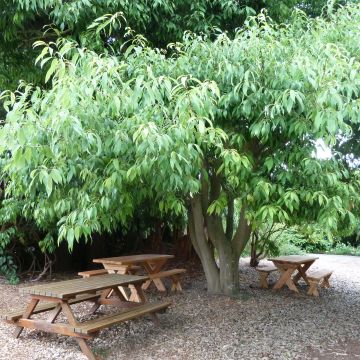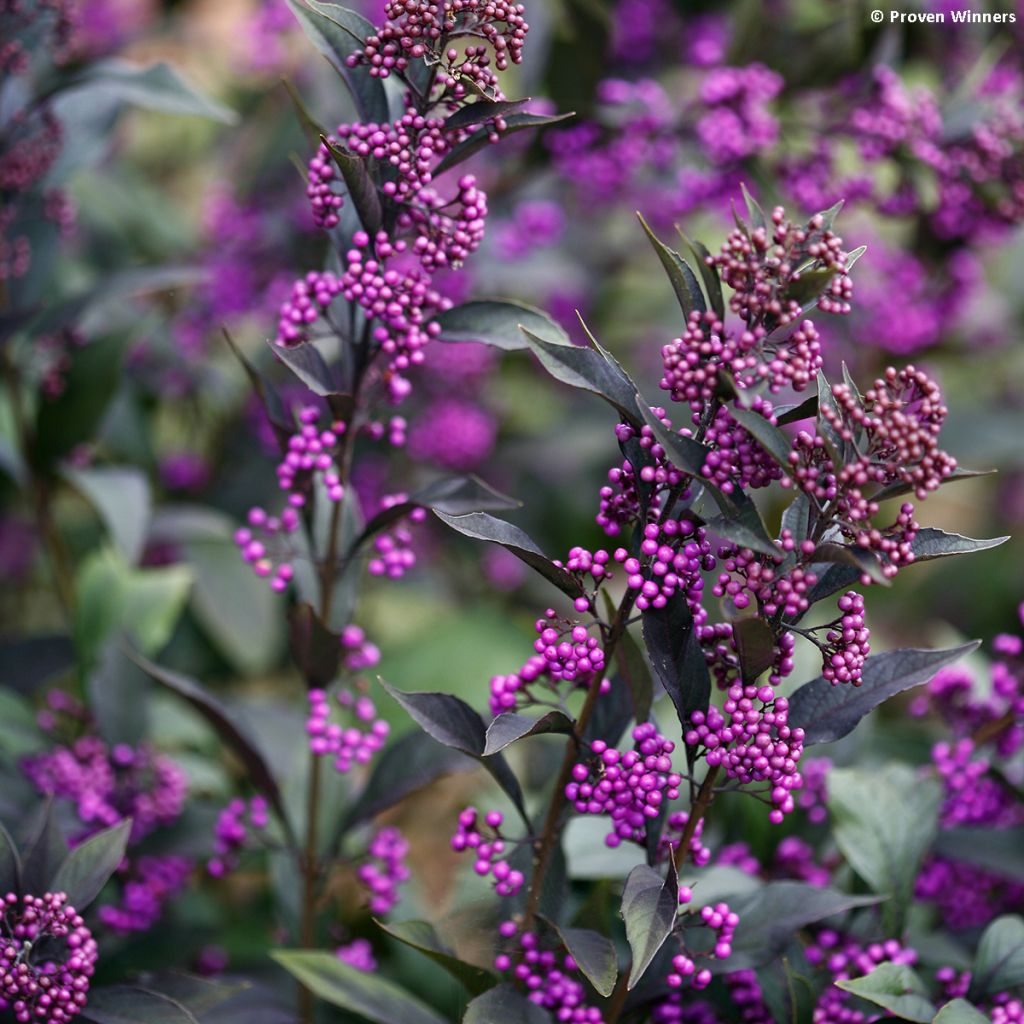

Callicarpa bodinieri Pearl Glam
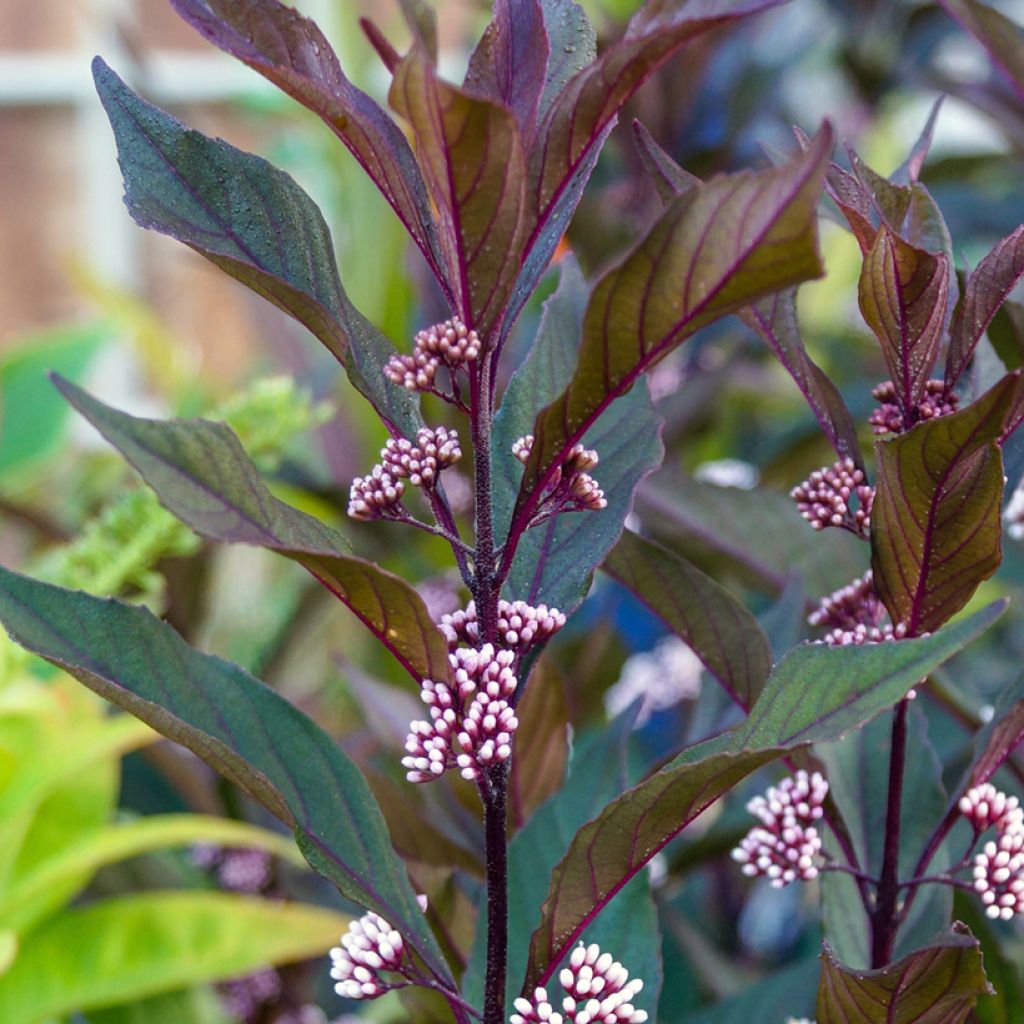

Callicarpa bodinieri Pearl Glam
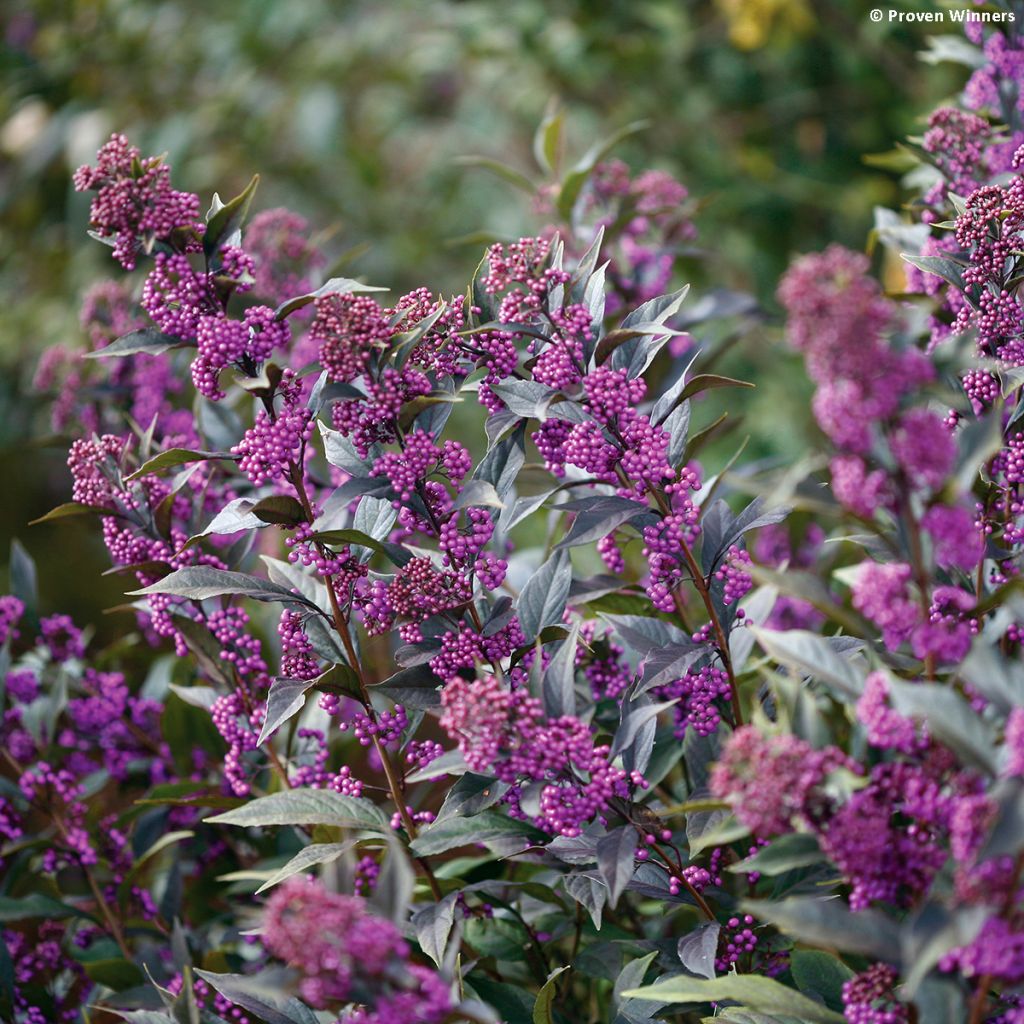

Callicarpa bodinieri Pearl Glam
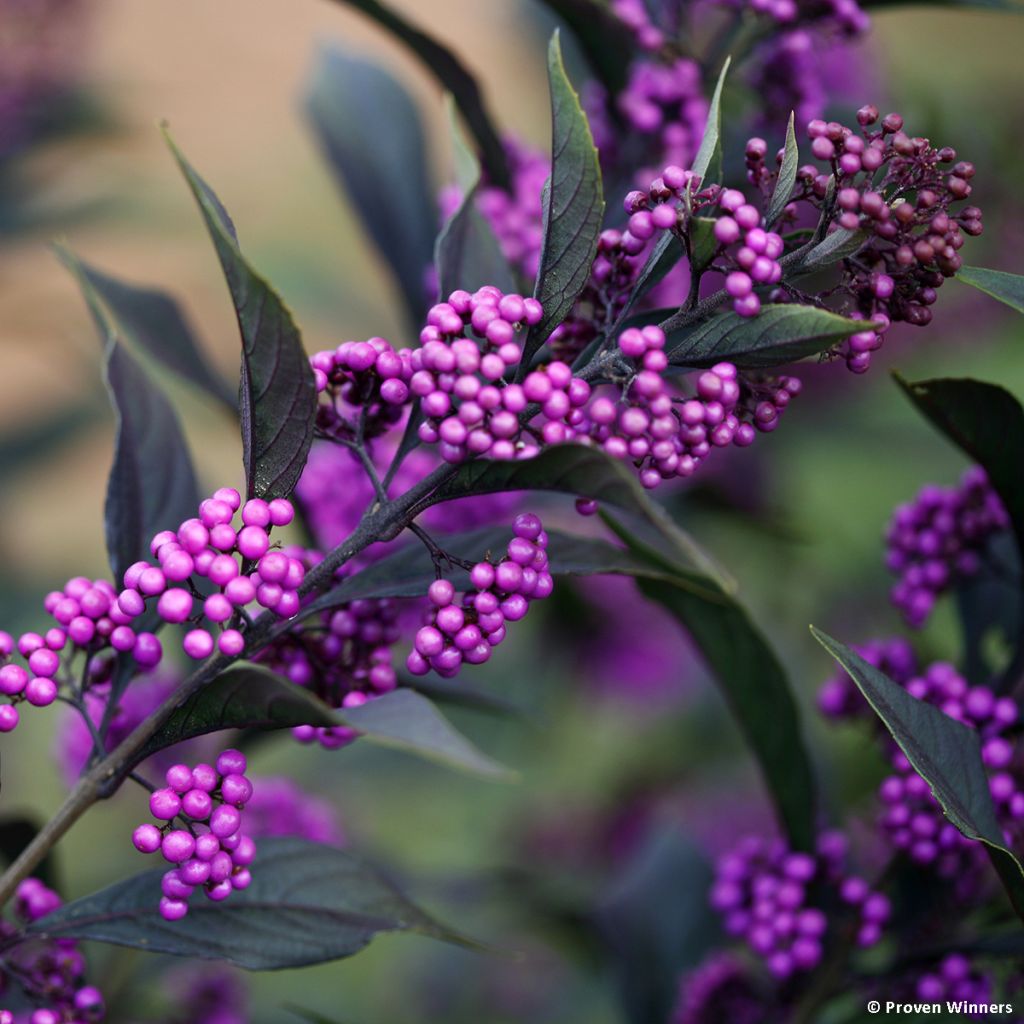

Callicarpa bodinieri Pearl Glam
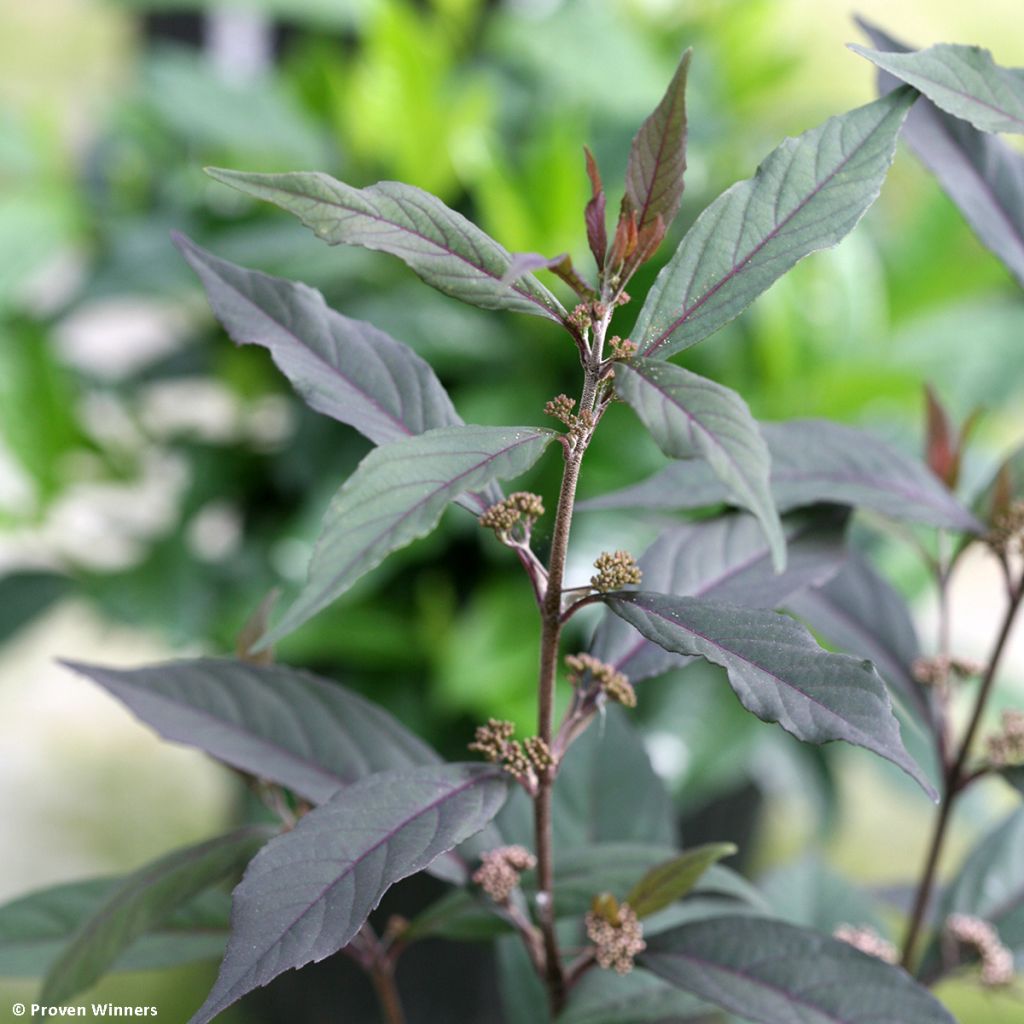

Callicarpa bodinieri Pearl Glam
Callicarpa bodinieri Pearl Glam
Callicarpa x bodinieri Pearl Glam
Bodinier's Beautyberry, Beautyberry
This item cannot be shipped to the selected country
Delivery charge from €5.90
Delivery charge from €5.90
More information
Schedule delivery date,
and select date in basket
This plant carries a 24 months recovery warranty
More information
We guarantee the quality of our plants for a full growing cycle, and will replace at our expense any plant that fails to recover under normal climatic and planting conditions.
From €5.90 for pickup delivery and €6.90 for home delivery
Express home delivery from €8.90.
From €5.90 for pickup delivery and €6.90 for home delivery
Express home delivery from €8.90.

Does this plant fit my garden?
Set up your Plantfit profile →
Description
The Callicarpa bodinieri Pearl Glam is the variety we have been waiting for! It has a stunning purple foliage that lasts (almost) all year round and looks magnificent in autumn when the bush is covered in its famous bright purple berries. This foliage colour also highlights its summer flowering, which is white-lilac in colour. This deciduous bush, attractive in many ways, has a compact habit suitable for even the smallest gardens. With its nectar-rich flowers and fruits that birds feed on in winter, it is both ornamental and beneficial for biodiversity and easy to grow in most soils.
The Callicarpa bodinieri used to be classified as part of the Verbenaceae family, but it is now considered a member of the Lamiaceae family. This family includes more than 200 genera and about 6,000 species of plants. Many of these plants have fragrant foliage, such as Mint, Lavender, Lemon Balm, Oregano, Rosemary, Basil, and Savoury, often used as cooking herbs. This family also has many ornamental plants, including the Salvias, Ajuga, Lamium, Stachys, and more, which have foliage rich in essential oils.
The Callicarpa genus has around 150 species native to North America or Asia (China, Korea, Japan). Some of these species are commonly cultivated as ornamental plants because of their numerous and colourful small fruits in autumn and winter. Callicarpa bodinieri is native to China and is named after Father Bodinier, a missionary and plant explorer in this Asian country. This plant is also known as the candy bush because of its profusion of attractive but inedible purple berries.
The Pearl Glam variety of Callicarpa produces many violet fruits, about 4 mm (0.2 inches) in diameter. The fruits appear from September until Christmas and are gathered in clusters of 30 to 40, forming violet balls along the branches. The fruits result from summer flowering, which occurs in June and July. The flowers are lilac-coloured and small, with protruding yellow stamens, and are nectar-rich. They are gathered in cymes that are 3 to 4 cm (1.2 to 1.6 inches) in diameter. The Pearl Glam plant is a compact bush that grows to a height of 1.20 m (3 ft 11 in) to 1.50 m (4 ft 11 in) with a spread of 90 cm (35.4 inches) to 1.20 m. It will grow in most ordinary soils, even limestone, and in sunny areas. It may suffer from a lack of water in summer if planted in drying soil, so it is advisable to water it from time to time if the leaves start to droop. The Pearl Glam variety of Callicarpa is very hardy once established and can survive temperatures as low as -20°C (-4 °F) or even lower. Although it can be affected by frost in its early years, it quickly recovers after pruning to remove the affected branches.
Callicarpa is a charming shrub that is attractive to wildlife and ornamental, particularly during winter, when its colourful fruit stands out against the often grey sky. Plant it in a mixed border with other interesting plants in spring or summer to enjoy its beauty all year round. The Korean White Forsythia, which flowers in white during February and March, is little known but perfect for opening the flowering season. The superb Rubra Flowering Quince (Chaenomeles speciosa) takes over in April and May, displaying vibrant red flowers and offering decorative yellow fruits in autumn that contrast beautifully with the purple berries of the Callicarpa. Plant with Weigelas that are easy to grow and generous in flowers in late spring. In summer, the small Hint of Gold Caryopteris offers beautiful blue flowers, while its golden foliage in spring turns to lime green during flowering. For a strong contrast of colours, consider planting a Solidago rugosa 'Fireworks', with purple and golden yellow hues.
Report an error about the product description
Callicarpa bodinieri Pearl Glam in pictures
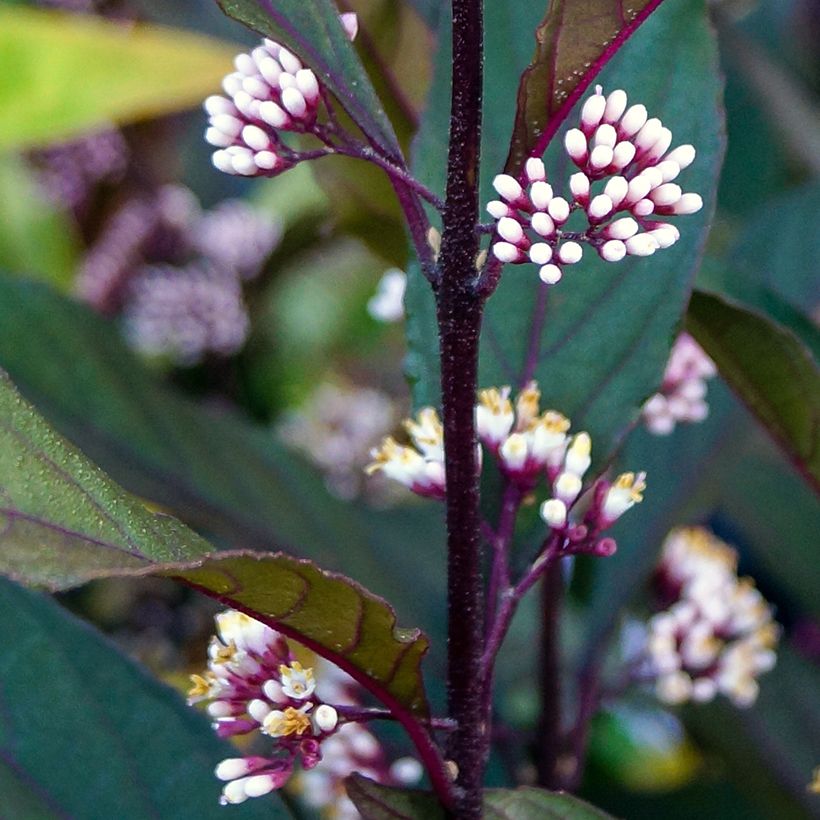

Plant habit
Flowering
Foliage
Botanical data
Callicarpa
x bodinieri
Pearl Glam
Lamiaceae
Bodinier's Beautyberry, Beautyberry
Cultivar or hybrid
Other Callicarpa
Planting and care
The Callicarpa bodinieri Pearl Glam is a low-maintenance shrub that grows quickly in most soils as long as they are well-drained and deep enough to provide moisture. It prefers a sunny or semi-shaded position and can withstand cold weather once it has matured, but it's best to protect it with mulch during its early years. To encourage fruiting, plant them in groups of three and prune any damaged branches by shortening them by 2/3 of their length at the end of winter. This shrub doesn't do well in oversaturated soils during winter or drought.
Planting period
Intended location
Care
-
, onOrder confirmed
Reply from on Promesse de fleurs
Striking foliage shrubs
Haven't found what you were looking for?
Hardiness is the lowest winter temperature a plant can endure without suffering serious damage or even dying. However, hardiness is affected by location (a sheltered area, such as a patio), protection (winter cover) and soil type (hardiness is improved by well-drained soil).

Photo Sharing Terms & Conditions
In order to encourage gardeners to interact and share their experiences, Promesse de fleurs offers various media enabling content to be uploaded onto its Site - in particular via the ‘Photo sharing’ module.
The User agrees to refrain from:
- Posting any content that is illegal, prejudicial, insulting, racist, inciteful to hatred, revisionist, contrary to public decency, that infringes on privacy or on the privacy rights of third parties, in particular the publicity rights of persons and goods, intellectual property rights, or the right to privacy.
- Submitting content on behalf of a third party;
- Impersonate the identity of a third party and/or publish any personal information about a third party;
In general, the User undertakes to refrain from any unethical behaviour.
All Content (in particular text, comments, files, images, photos, videos, creative works, etc.), which may be subject to property or intellectual property rights, image or other private rights, shall remain the property of the User, subject to the limited rights granted by the terms of the licence granted by Promesse de fleurs as stated below. Users are at liberty to publish or not to publish such Content on the Site, notably via the ‘Photo Sharing’ facility, and accept that this Content shall be made public and freely accessible, notably on the Internet.
Users further acknowledge, undertake to have ,and guarantee that they hold all necessary rights and permissions to publish such material on the Site, in particular with regard to the legislation in force pertaining to any privacy, property, intellectual property, image, or contractual rights, or rights of any other nature. By publishing such Content on the Site, Users acknowledge accepting full liability as publishers of the Content within the meaning of the law, and grant Promesse de fleurs, free of charge, an inclusive, worldwide licence for the said Content for the entire duration of its publication, including all reproduction, representation, up/downloading, displaying, performing, transmission, and storage rights.
Users also grant permission for their name to be linked to the Content and accept that this link may not always be made available.
By engaging in posting material, Users consent to their Content becoming automatically accessible on the Internet, in particular on other sites and/or blogs and/or web pages of the Promesse de fleurs site, including in particular social pages and the Promesse de fleurs catalogue.
Users may secure the removal of entrusted content free of charge by issuing a simple request via our contact form.
The flowering period indicated on our website applies to countries and regions located in USDA zone 8 (France, the United Kingdom, Ireland, the Netherlands, etc.)
It will vary according to where you live:
- In zones 9 to 10 (Italy, Spain, Greece, etc.), flowering will occur about 2 to 4 weeks earlier.
- In zones 6 to 7 (Germany, Poland, Slovenia, and lower mountainous regions), flowering will be delayed by 2 to 3 weeks.
- In zone 5 (Central Europe, Scandinavia), blooming will be delayed by 3 to 5 weeks.
In temperate climates, pruning of spring-flowering shrubs (forsythia, spireas, etc.) should be done just after flowering.
Pruning of summer-flowering shrubs (Indian Lilac, Perovskia, etc.) can be done in winter or spring.
In cold regions as well as with frost-sensitive plants, avoid pruning too early when severe frosts may still occur.
The planting period indicated on our website applies to countries and regions located in USDA zone 8 (France, United Kingdom, Ireland, Netherlands).
It will vary according to where you live:
- In Mediterranean zones (Marseille, Madrid, Milan, etc.), autumn and winter are the best planting periods.
- In continental zones (Strasbourg, Munich, Vienna, etc.), delay planting by 2 to 3 weeks in spring and bring it forward by 2 to 4 weeks in autumn.
- In mountainous regions (the Alps, Pyrenees, Carpathians, etc.), it is best to plant in late spring (May-June) or late summer (August-September).
The harvesting period indicated on our website applies to countries and regions in USDA zone 8 (France, England, Ireland, the Netherlands).
In colder areas (Scandinavia, Poland, Austria...) fruit and vegetable harvests are likely to be delayed by 3-4 weeks.
In warmer areas (Italy, Spain, Greece, etc.), harvesting will probably take place earlier, depending on weather conditions.
The sowing periods indicated on our website apply to countries and regions within USDA Zone 8 (France, UK, Ireland, Netherlands).
In colder areas (Scandinavia, Poland, Austria...), delay any outdoor sowing by 3-4 weeks, or sow under glass.
In warmer climes (Italy, Spain, Greece, etc.), bring outdoor sowing forward by a few weeks.

































